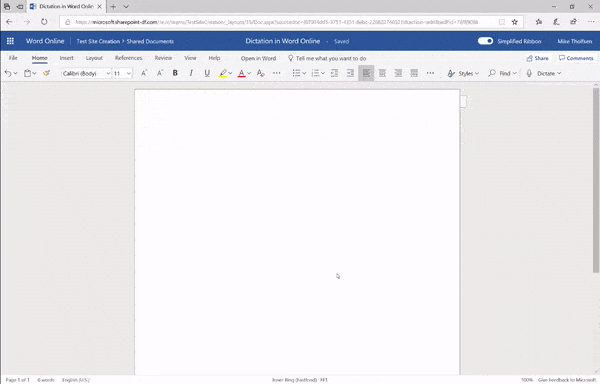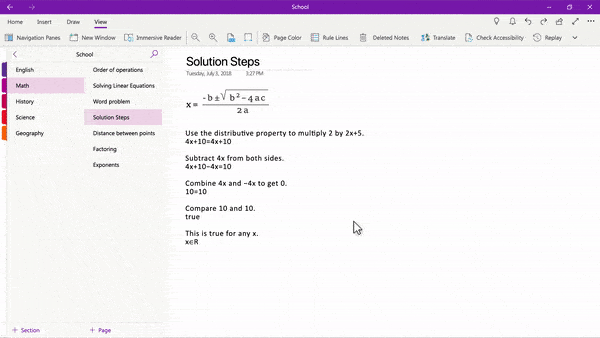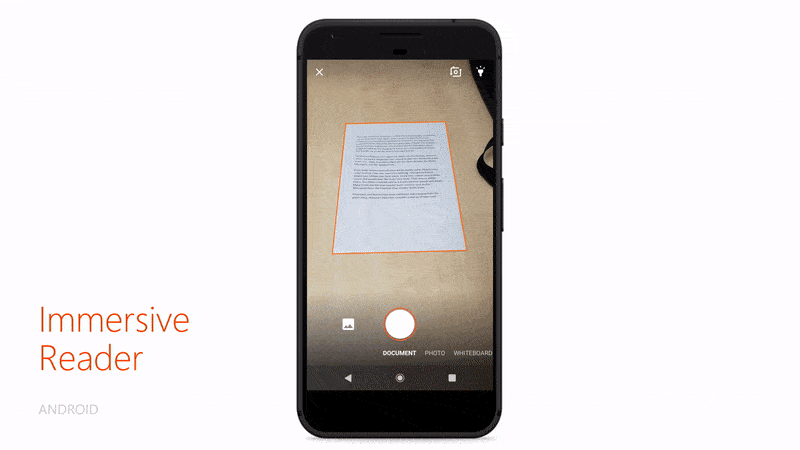In Office 365 and other MS products will add voice I / O for dyslexics

An extensive posting was posted on the Microsoft Education Team blog yesterday that presents a voice assistant for the Office 365 product package, as well as a number of updates to other products. First of all, we are talking about adding Dictation for Office 365 Desktop Apps features to the web version of Office 365 students' products, as well as the release of the Office Lens product on the Android platform, which was previously available only to iOS users. And this is not a complete list of all the "goodies" from Microsoft. All these activities are held in conjunction with the organization Made Dyslexia , in which the technology giant plans to create educational materials and manuals for students and students suffering from dyslexia.
The importance of publishing the MS Education Team is also in the fact that it clearly shows one of the priority and, most importantly, potentially competitive activities of the company - the development of voice input and text recognition systems on user devices for all existing ecosystems, more about which under the cat. There we will briefly talk about Microsoft's new products without marketing enthusiasm and discuss what is happening and why the “main corporation of evil” once suddenly found itself at the forefront in the field of education of the younger generation.
According to statistics provided by Microsoft employees, almost every fifth student (according to other data - up to 15%) suffers from some form of dyslexia - a selective violation of the ability to recognize parts of the written text or write independently, without disturbing the ability to learn. Often dyslexia is accompanied by ADHD (which you can read about in Habré here"first-hand"). In fact, people with dyslexia have a normal intellect, they can and often want to learn, but are not able to do it because of the peculiarities of the work of their own brain. Dyslexia is not a disease of the brain in our usual form, and therefore not treated. That is, dyslexia in modern society is a form of disability. For people suffering from it, there are special training programs that, to a varying degree, still limit them in their ability to consume information. This category of users is called the primary target audience of the new products of the company.
As we said above, Microsoft brings its Dictation for Office 365 from the application to the web add-in for Word Online and OneNote Online, which will work under any modern browser (yes, the expected trick with nailed functionality to Edge did not happen, but a little later).

The second important product that is widely available is Immersive Reader. This development organizes line-by-line reading of the text with mathematical formulas to facilitate the perception of such a mixed text:

All this will work in conjunction with Math Pane , another educational product of the company. Immersive Reader will be available on recently acquiredMicrosoft educational platform Flipgrid, which the company bought in July of this year and transferred to a free basis. This vector of development of Microsoft products is aimed at combating a specific type of dyslexia - dyscalculia , in the presence of which a person has difficulty visually perceiving mathematical expressions and formulas. This disease results from the inability of the brain to estimate the number of objects at a glance, that is, without recalculation. As in the case of dyslexia, dyscalculia does not affect the overall level of intelligence, but limits a person in the directions of development and everyday aspects.
In addition, Immersive Reader will also be transferred to Andoid, this time in conjunction with Office Lens - which ensures the capture and digitization of printed text. Previously, the product was available only for iOS.

All the above "readers" are not limited to English and have an extensive list of supported languages, including Russian ( you can find it here ). Edge is also not spared innovation. Microsoft integrates a dictionary for ePub and PDF files into its browser, as well as a new text-by-line view.
What is going on?
If you do not follow Microsoft’s activities or come into contact with company news only as part of viewing the xBox presentation at E3, then it’s quite natural that your reaction could be something like this:

There is a clear feeling that Microsoft intends to pay its karmic debts for previous years of work (and at least they owe a lot to the designers of IE6), and are actively expanding their presence in the educational and Open Source-spheres.
In addition to platinum membership in the Linux FoundationThe corporation is actively developing integrated solutions for educational institutions of all levels of education. And if 10-15 years ago this process began with the sale of license packages for computer classes, now Microsoft offers comprehensive software and hardware solutions based on Windows 10 and Office 365 to schools and higher educational institutions. Objectively, in this market of comparable size and resources Microsoft has no competitor. Only Amazon and Apple can potentially with the giant, but both companies are concentrating on other segments of the market and are not interested in the educational segment like Microsoft.
In the last presentation, it is important that a significant part of the new products presented by Microsoft will be available by the end of October, and for free. The same Flipgrid was bought by Microsoft and transferred to a free base, although the project was originally commercial in nature. Also, the immersive reading function successfully exists at least in Word Online (“View” tab) and reads Russian quite well.
Do not forget that the products and functions presented within the educational programs of Microsoft, with their correct implementation, have a great future. Until now, the market has not implemented an arbitrarily decent yet simple solution for translating the dictated text into a written form. The only caveat - oral speech is often much simpler than a written text. Now Microsoft is working in the opposite direction and specially for dyslexics they develop algorithms that would simplify complex written texts to a simpler level in order to facilitate their listening comprehension. If the corporation will be able to expand these works by 180 degrees in the future and teach voice input systems to “ennoble” oral speech to an acceptable level for writing, this will definitely be a breakthrough.
Another area of application of the system is the conversion of voice messages into text within the framework of communication in instant messengers. The germ of this system was tested several years ago as part of Skype (simultaneous translation system), but due to its complexity it was not widely spread. On the other hand, voice messages are now extremely common in social networks or Telegram, but some of the audience simply refuses to use them for several reasons. For example, because it is convenient only for the “sending” voice message, but the “receiving” audio recording spends considerable time listening. It is terrible to say, but the Voice-to-Text function could even breathe new life into the agonizing Skype (after serious processing and facilitation of this product, of course).
